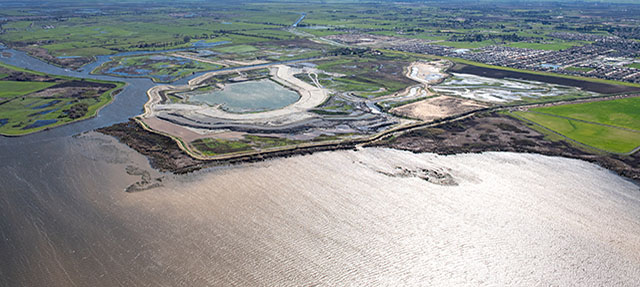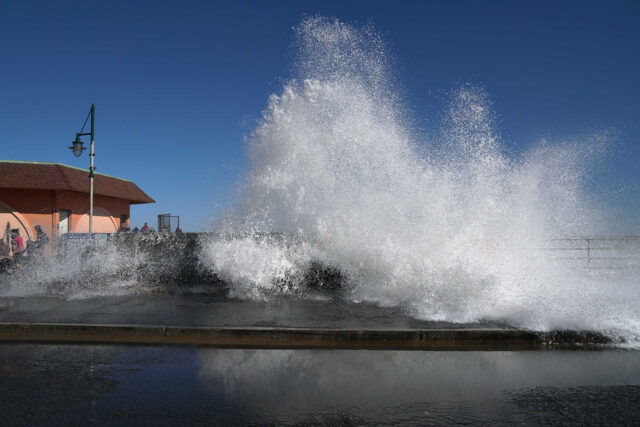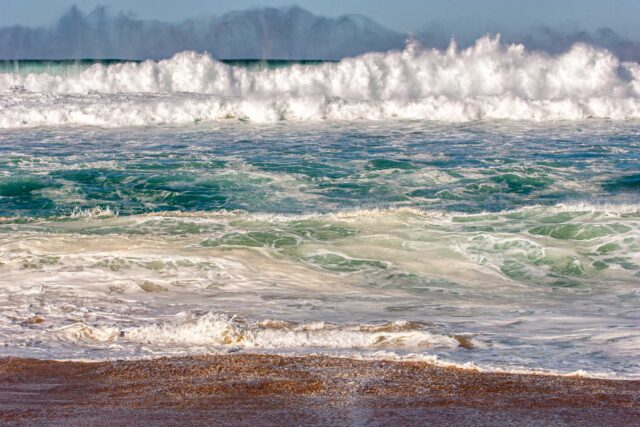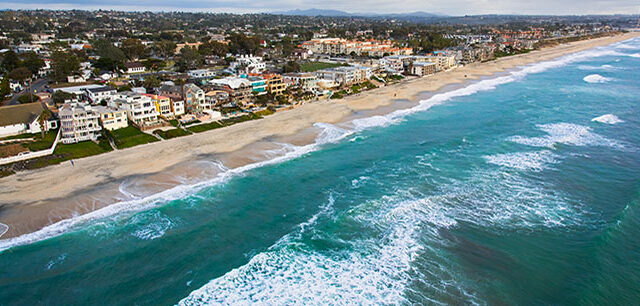How will rising seas affect the state’s freshwater ecosystems, and what role do these systems play in managing the coming changes? We talked to Letitia Grenier—a member of the PPIC Water Policy Center research network and a senior scientist at the San Francisco Estuary Institute—about this issue.

PPIC: How will sea level rise affect California’s freshwater systems?
LETITIA GRENIER: We tend to think of climate change as causing a slow, linear rise in sea level, but it’s definitely not always gradual. Depending on a host of local and global factors, we could see quick changes and sudden jumps in sea level.
Rising seas will affect how we manage runoff from major storms. It’s not enough to manage water coming down rivers and rising from groundwater—we also have to account for concurrent king tides and storm surges. It won’t work to build infrastructure that only addresses sea level rise—it must also take into account flooding coming from behind and below.
Rising seas will also push salty water farther into estuaries, including the Delta. The levee system throughout the Bay‒Delta is fragile, and could fail in big storms or earthquakes. That would allow a lot more salt water to come in, which could affect the water supply for Southern California.
PPIC: Talk about the potential for “natural infrastructure” to address rising seas.
LG: Our water infrastructure was developed to address specific issues, piece by piece. No one was responsible for figuring out how to make the overall watershed work well for all the things we need it to do. Instead, we optimized the system in each location for one function—water supply, flood control and other tasks. It’s like having many people each design one part of a car without thinking of the whole vehicle—it doesn’t work very well.
This approach to managing freshwater ecosystems changed key natural processes that actually worked for us—we interrupted the flow of sediment down rivers, blocked salmon from migrating upstream, and drained wetlands. There is huge potential to redesign systems to let natural processes help us solve some of our complicated problems. For example, if we realigned a creek so that it could move sediment to the coast, it can help rebuild marshes that would protect the urban shoreline and bring a host of other benefits.
PPIC: What are the advantages of using natural infrastructure options?
LG: Bringing more benefits is the big one. Engineered solutions are mostly designed to bring just one benefit. Compared to a concrete flood basin, a marsh provides not just flood protection but also creates habitat for at-risk species, protects the shoreline, sequesters carbon, filters and breaks down contaminants, and creates recreational opportunities. And traditional engineered infrastructure has a lifespan. Over a 50-year lifespan, will it be flexible enough to adapt to climate change? Usually not. Engineered solutions also cost more over their lifetime to maintain and upgrade. In contrast, ecosystems are always changing; they can adapt in ways that engineered solutions can’t. Let’s restore these systems so they can continue to do useful work for us.
PPIC: How do we get there?
LG: We have a lot of knowledge of freshwater ecosystems, but knowing how to use them as part of our water infrastructure system is pretty new. So we need to test more, and build more. We’re doing it too slowly and at too small a scale.
We also need to work across jurisdictions. We haven’t set ourselves up socially to do this. Our current system has too many agencies with missions that aren’t well aligned. So we’ll need to voluntarily coordinate to make our watersheds work as they should—and provide incentives to bring agencies together over watershed planning. It will take time to make this change, and we’re very short on time. I think these big social challenges are harder to resolve than the science side.
Many people think of ecosystem restoration as something that is “nice to have,” not “have to have.” But growing extremes in fires, floods, and droughts are bringing people around to the realization that we’re dependent on ecosystems, and it matters if they’re healthy. I hope that leads to the understanding that natural infrastructure is worth investing in and can perform better than traditional infrastructure in many cases. Climate change will require us to rebuild or fix a lot of our existing infrastructure. It’s a great opportunity to make transformational change.





